IAC News
IAC News No.106, August 2 2021
Japan Society of Civil Engineers International Activities Center August 2, 2021 IAC News No.106
The Big Picture of Revitalization and Civil Engineering in Japan after the COVID-19 Pandemic
-Transformation to an Open and Attractive JSCE -
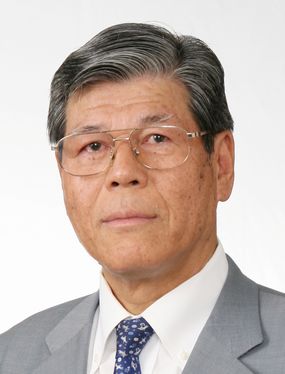 Hiroaki Taniguchi
Hiroaki Taniguchi
109th JSCE President
I am Hiroaki Taniguchi, the 109th president of the Japan Society of Civil Engineers. Thank you for your continued support.
In the Japanese spirit of “kei-ou-kai-rai,” which means to inherit a business from one’s predecessors and move the ball forward, I think that, based on the achievements of those who have come before us and our current wide range of efforts such as JSCE 2020 and those of each research committee, etc., it is essential to adapt to this drastic change in the world we currently live in. With the aim of becoming an “open and attractive JSCE,” I would like to orchestrate a “Big Picture of Revitalization and Civil Engineering in Japan after the COVID-19 Pandemic.” To do this, we will strive to promote a wide range of exchanges and relationships both inside and outside Japan, have members of industry, academia, and politics engage in the frank exchange of information and opinions, and create a timely proposal based on the wisdom we pull together as well as the available evidence.
Twenty and a half years having passed since the beginning of the 21st century, and Japan currently finds itself in a state of stagnation and deadlock called the “lost 30 years.” Disasters such as those caused by torrential rain and earthquakes occur almost yearly, and last year the outbreak of the novel coronavirus escalated into a pandemic, with it being a national crisis with little sign of drawing to a close. While there is an urgent need to stop the spread of infection as soon as possible, amid an era of major changes such as a declining birthrate and aging population, declining population, globalization and IT-related progress, the escalation of climate change and energy problems, such circumstances call in to question what should post-COVID-19 lifestyles and economic and social activities, the infrastructure that supports them, civil engineering projects, and civil engineering technology be like and how should we tackle these issues. To break through such a state of deadlock and crisis, we must change how we live and work as well as our political and economic systems and infrastructure so they are not merely a continuation of the past.
In November last year, the United Kingdom announced “National Infrastructure Strategy - Fairer, faster, greener-” to correct regional disparities. The U.S. President Joe Biden announced “The American Jobs Plan” at the end of March this year, marking a change in infrastructure cuts to date to spend about $2 trillion over eight years on diverse and widespread infrastructure to be able to create new jobs, restructure the economy, and compete with the emerging competition of China. To compete with competition from the rest of the world with the aim of “revitalization and sustainable development in Japan post the COVID-19 pandemic”, it is time for Japan to also change how it thinks about infrastructure investment, which has seen continuous cutbacks.
The indispensable “big picture” is a blueprint that can be trusted by the people from a civilized, cultural, and international perspective for the planned, efficient, and proactive improvement and maintenance of infrastructure. In the past, a long-term plan was formulated that included specific figures, but the long-term plan that is currently being formulated does not include new projects or specific investment amounts. Without specific projects and figures, discussions will not advance, it will be difficult to prioritize initiatives and projects, and evidence-based decision-making and strong action will not come to fruition. In the United States, it is said that a “big picture” is necessary at times when everyone pulls together because work cannot be done by individuals alone, and MBA programs also emphasize the need for a “big picture.”
Due to further advancement of the division of labor such as construction contracting, outsourcing, PPP (public-private partnerships), and the involvement of many people from different positions, it is also difficult to make forecasts related to project development and management from each standpoint in each process of infrastructure improvements and maintenance unless the future vision is clear. It is difficult to demonstrate great skill even if one just decides to draw a big picture by putting oneself in the shoes of everyone else. Ultimately, such efforts probably won’t succeed.
In formulating the big picture, I would like to take in and reflect the opinions of the general public at large as an “open JSCE.” Three years ago, we conducted a social capital awareness survey of about 3,000 people via the Internet at the Japan Institute of Country-Technology Research (JICE). Subsequently, during the May holidays, in collaboration with JICE, we conducted a social capital awareness survey based on the COVID-19 pandemic and disaster in Japan caused by torrential rainstorms. We will also utilize the note site to solicit views on the lifestyles and towns that the general public hopes for, with a focus on young people in particular. I hope that each chapter of JSCE will, based on our efforts so far, solicit opinions from civil engineers regarding the vision of the chapter block and promising projects to compile a “big picture” of the chapter block.
In addition to this, I would like to conduct a survey on the trends and amount of investment of past long-term plans for infrastructure, examine some cases, and present the appropriate amount of investment. It will be a reasonable investment amount that is not an amount set in stone but incorporates projects that offer dreams and hopes for the future, such as land, sea, and air transportation networks and information and communication networks that promote exchange and cooperation in addition to national resilience against natural disasters and maintenance and renovations such as for disaster prevention and mitigation, as well as projects that contribute to overseas expansion.
Here, it is important to formulate a “big picture” that takes advantage of the unique characteristics of JSCE, which is a group of members from industry, academia, and politics that differs from that of the national government. We are now in an era of diverse values. At the outset of this initiative, there is no set vision or answer. I hope that, through the process of proactively discussing everyone’s visions and feelings and learning through friendly competition and not leaving such matters to the national government or other people, stories and narratives that match the times and projects offer dreams and aspirations will emerge, and that we will be able to find and formulate a “big picture” (blueprint) as the final vision.
In closing, technology is a system, a network that people can trust is essential, and those on the front line are the forefront that creates value. It is necessary to improve communication with those on the front line so that we do not fall into the trap of having “OKY work sites” where there is a strong disconnect between what management expects and what those on the front line can realistically do. At the same time, it is important to increase opportunities to hear what young people and women have to say as well as more chances for them to be involved. I would like to aim to adopt a pull-type management approach that can expect to see the emergence of young people and women who participate and experience the benefits, give their all for JSCE, and offer up their wisdom. And, in order for motivated young people to join and find work with JSCE and establish an “attractive JSCE” before eventually doing the same for the civil engineering industry as a whole, it is essential to improve their treatment based on the factors of salary, vacation, and aspirations (SVA). For the vision and appropriate evaluation of civil engineers suitable for the IT and DX (digital transformation) age, I would like to go beyond the standpoints of contractor and contractee and make an appropriate proposal that contributes to improving the social status of civil engineers, based on the open and frank exchange of opinions that is only possible at JSCE as a group made up of members from industry, academia, and politics.
As I have mentioned above, I would like to make use of my experience to fulfill my mission with agile management in mind. I kindly ask for your warm and resolute cooperation and support.
Lao People's Democratic Republic
Construction to replace two bridges on the National Route 9
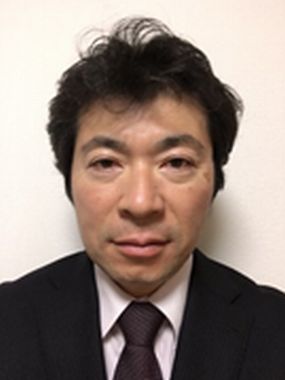
Hiroyuki Gotō
(International Business Division, HAZAMA ANDO CORPORATION)
Outline of Construction
The National Route 9 in the landlocked Lao People's Democratic Republic is part of the East-West Economic Corridor that crosses the Indochina Peninsula and connects to Lao Bao on the border with Vietnam and Savannakhet on the border with Thailand. This line is an important international highway for socioeconomic development not only in this country but also in all neighboring countries.
Many bridges in the National Route 9 were constructed in 1980's, and the problem of degradation has become tangible. More than 30 years have passed since the construction of the 2 bridges of this project, and large deflection was caused in the main girder partly by the effect of heavy vehicles. It was decided to replace them because they were insufficient as a river crossing facility.
In the replacement, we adopted the “River Bridge” (composite deck bridge product’s name) which can reduce the girder height and the road surface height, and which uses weather-resistant steel materials to reduce the life cycle cost.
Traffic Management in the International Road
In order to complete the construction, it was necessary to carry out traffic management of a single side traffic alternatively. This activity was performed continuously for about 2 years in a 24 hour system on the international road where heavy vehicle traffic is abounding. Therefore, one of the important keys to the success of the construction was the role of the traffic guide. A series of construction works from the removal of the existing bridge to the construction of superstructure were impossible without safely controlling the traffic.
The traffic guide consisted of 3 groups (three people in one group) for 1 bridge, and was arranged in 3 shifts a day for 24 hours. All of them were hired from nearby villages. The villagers, who had only experience working in agriculture, and who had never worked at night, were worried about whether they could safely manage traffic on such an important international road. Furthermore, because in the case of large vehicles, one-sided alternate traffic takes place over a long distance, there were some concerns, such as malfunction or dead battery of the radio which communicates between both ends of the traffic regulation zone. Because of these factors, we took time to repeat the procedure meetings and simulation trainings. However, when we actually practiced, we found a small defect, but the villagers accepted our appointments and improved. We recruited a mixed team from a wide range of age groups, from young to elder villagers, and we were surprised by the good teamwork. As a result, we were able to carry out the construction without any traffic accidents thanks to the honest and responsible Laotians.
The construction was successfully completed in June 2019. I strongly feel that without the understanding and cooperation of the employers, engineers and local residents, no accident, no disaster and completion within the construction period could not have been achieved. I'd like to take this opportunity to express my gratitude to them.
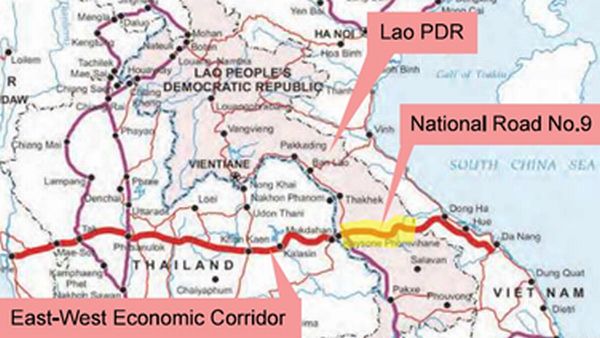
Construction Site Location Map
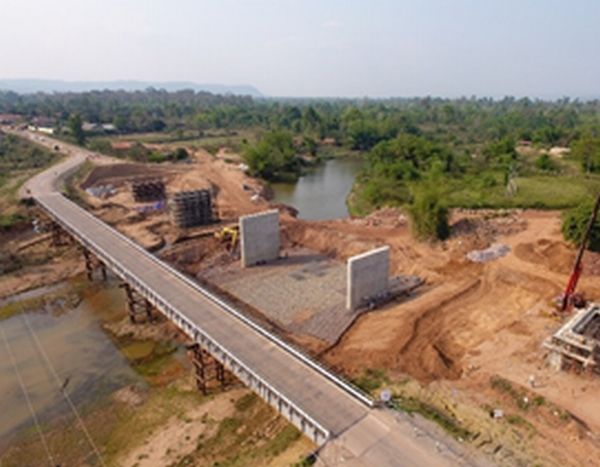
Construction Situation
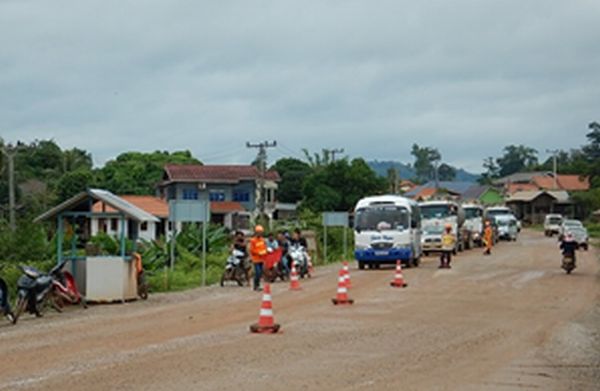
Road Detour Situation
【Reported by Hiroyuki Gotō (International Business Division, HAZAMA ANDO CORPORATION)】
The Committee on Hydroscience and Hydraulic Engineering
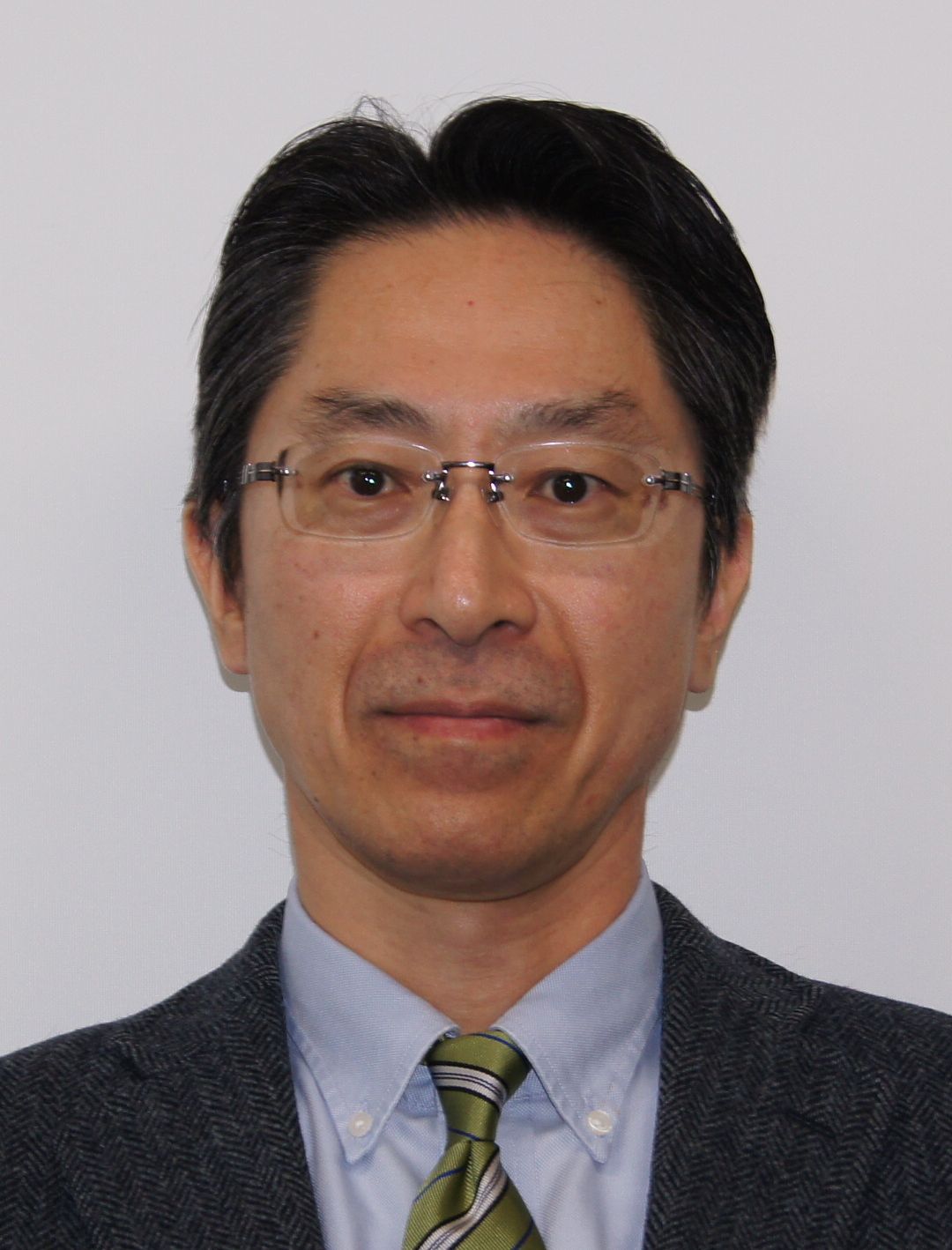
Prof. Yasuto Tachikawa
(Chair of Committee on Hydroscience and Hydraulic Engineering)
The predecessor of the present committee of hydro engineering is the research committee for hydraulics formulary. The committee was established in 1940 as the second research committee of Japan Society of Civil Engineers. The committee, however, was once dissolved in 1942 after the publication of the formulary. The committee was reorganized in 1946 and became a standing committee named “Committee of Hydraulics” after publishing the first copy of the hydraulics formulary in 1949. In 1955, Coastal Engineering Committee became an independent committee, but the range of target issues has become wider and wider as time goes by. Therefore, the name was changed to “Committee on Hydroscience and Hydraulic Engineering” in 2003. Research activities, surveys and publications about river or water resource are conducted by the above committee, 4 sub-divisions by field and interdisciplinary meetings. In 2020, there were many events that were canceled or postponed due to the COVID-19. Some activities are introduced below.
◆Conference on Hydraulic Engineering
In 1956, 22 papers were presented in a conference of hydraulic research society. The conference was held at Public Works Research Institute and was the 1st Conference on Hydraulic Engineering. After then, variety of hydro engineering topics have been introduced and discussed, but data on rivers, the revolution of measuring and analysis techniques and the improvement of research environments have diversified research targets year by year. After the 42nd conference was held at Tottori University, the conference is often held in several prefectures. In November 2020, the 65th conference was held online and 3090 participants in total joined. 248 articles were selected from 317 submitted papers by 245 reviewers including 70 editorial committee members.
◆Symposium of Advances in River Engineering
Symposium of Advances in River Engineering aims to develop and spread river engineering techniques through research presentations and panel discussions on river related issues. Therefore, cooperation among public agencies, universities and private companies, pioneering interdisciplinary fields and activities in actual fields is important. In June 2019, the 25th symposium was held in the University of Tokyo as usual. Presentations and discussions were carried out with 1206 participants in total. In 2020, the symposium was cancelled due to COVID-19. A journal named “Advances in River Engineering” was also published in 2020.
◆Water Symposium
Citizens, private companies, public agencies and Japan Society of Civil Engineers exchange opinions on benefits and problems of water for human beings or nature in order to propose “Suitable relationship between water and human.” The 1st Water Symposium was held in Tottori Prefecture in 1996 and the 24th one was held in Shiga Prefecture in August 2019. Keynote speeches, panel discussions and presentations by children were carried out and 333 participants joined. It was planned to be held in Gunma in 2020, but it was postponed for one year due to COVID-19.
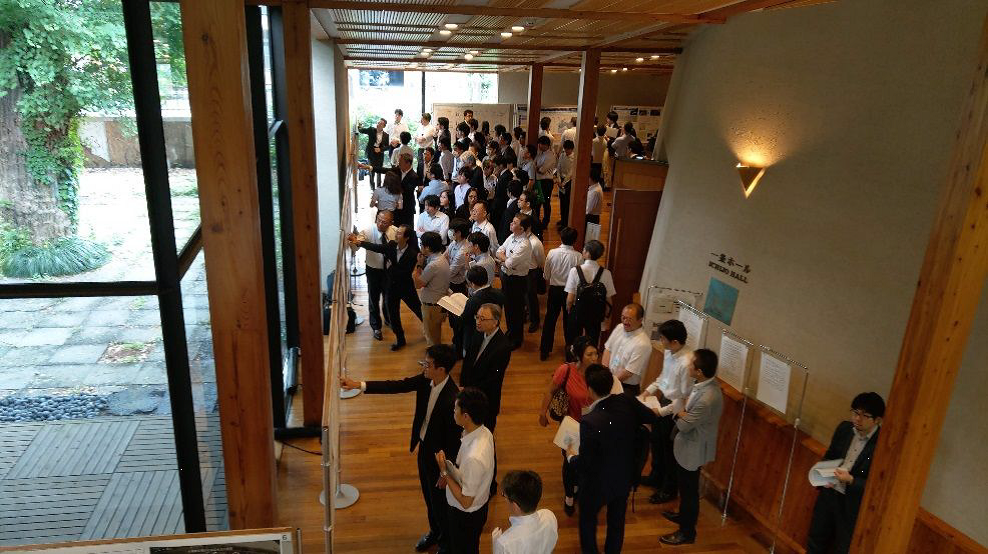
Poster Presentation in the Symposium of Advances in River Engineering
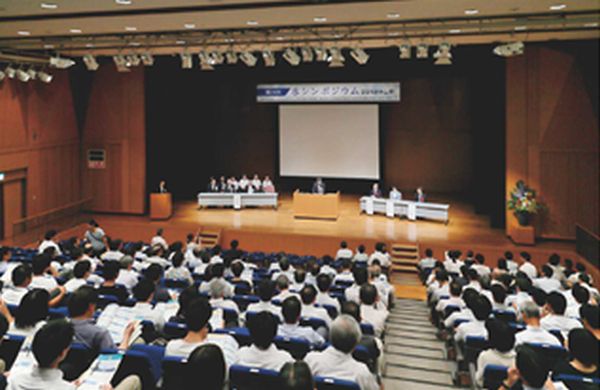
Water Symposium 2019 in Shiga
【Reported by Yasuto Tachikawa, Chair of Committee on Hydroscience and Hydraulic Engineering (Kyoto University)】
Unique Engineering Challenge for Jakarta Fishing Port
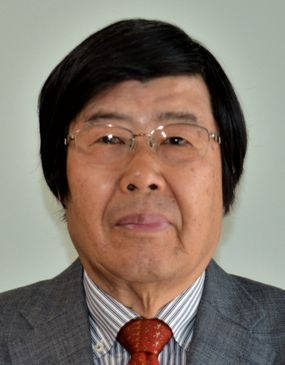
Sadao Orishimo
(Oriental Consultants Global Co., Ltd.)
I joined an engineering consulting firm in 1971. As the Japan International Cooperation Agency (JICA) was officially established in 1974, my life as a consultant began with Japan’s official development assistance (ODA). Among these ODA projects, the Jakarta Fishing Port Project (JFP), which I was involved in 1978, used Japan’s ODA loans to construct a completely new landfill (about 80 hectares), port facilities (a quay of 1,500 meters, etc.), and fishery-related facilities. At the time, Indonesia was not yet showing any signs of economic development. Considering the strong demand of the Indonesian government to utilize local materials and labor with using as little foreign currency as possible, approximately 1 million bamboo trees were used to establish a countermeasure against soft ground by adopting a bamboo pile and mat construction method for the approximately 4,000-meter breakwater and revetment foundation (JSCE Journal, March 1986). This project set a precedent, and the same construction method was adopted for breakwaters and revetments at the Jakarta International Port and new Patimban Port, which were subsequent ODA efforts of Japan. By thinking that we could perhaps purify the seawater in the closed Jakarta Fishing Port by way of a simple method, we independently devised a “seawater purification system utilizing the tidal range fluctuation” (JSCE Journal, October 2003). Furthermore, we succeeded in significantly reducing construction costs by taking advantage of the mangroves’ ability to dissipate waves by using them as part of the revetments and breakwaters (Japan Society of Civil Engineers Marine Symposium, July 2004). Mangrove revetments are also used at the new Patimban Port. I am proud that I was involved in efforts at the Jakarta Fishing Port in which we had SDGs in mind long before they became a hot topic. The Jakarta Fishing Port has undergone several expansions and renovations with Japan’s ODA loans over 40 years or so, and it has become the driving force for Indonesia to become the world’s second-largest fishery powerhouse. JICA commissioned me to write the “Jakarta Fishing Port Story”, a book that provides a record of this historic ODA project. The story is also told online to people all over the world through “International Infrastructure Archives” produced by JSCE. The Jakarta Fishing Port was undertaken with Japan’s ODA loan, and I actively worked to publicize this fact under the motto that Japan’s ODA can only be witnessed overseas. One of the PR initiatives is a fishing port tour for Japanese elementary school children in Jakarta, which has been held every year since 2003, and already more than 2,000 children have learned about topics such as how ODA works, the Indonesian fishing industry, bamboo-based construction methods, mangroves, and the seawater purification system. At the same time, many Japanese people living in Indonesia and Japanese university students are given the opportunity to visit the Jakarta Fishing Port so that they can understand ODA.
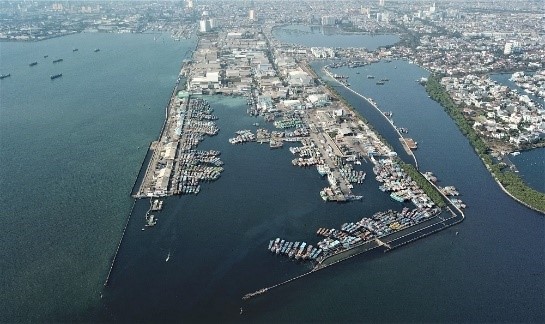
Jakarta Fishing Port (Photographed in 2019)
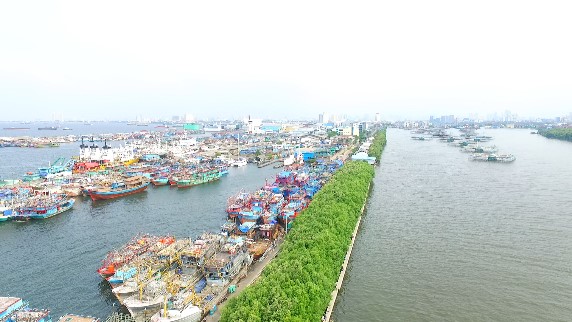
Mangrove Revetments and Breakwaters
(Photographed in 2016)
【Reported by Sadao Orishimo (Oriental Consultants Global Co., Ltd.)】
FY2021 JSCE Annual Meeting International Program
The 2021 JSCE Annual Meeting will be held online from Monday, September 6 to Friday, September 10. The International Activities Center will be the venue for the “International Roundtable Meeting (RTM)”, “The 23rd International Summer Symposium (The 23rd ISS)”, and the “International Workshop for Young Civil Engineers (WS)” from Wednesday, September 8 to Friday, September 10.
At the RTM (16:00-18:00 on Wednesday, September 8), researchers from five overseas countries/regions will, under the theme of “Changing Society and Future Infrastructure”, look at changes in society in the age following the COVID-19 pandemic and discuss future infrastructure development.
At the Summer Symposium, an “International Session” (a part of the “JSCE Annual Conference”) will be held in the morning of September 9 and 10, and the WS will be held from 14:00 on September 10 for international students and young engineers in Japan. At the WS, under the theme of “Utilization of AI in Civil Engineering for a Future Society”, we will consider future possibilities and ideas for utilizing AI while looking at examples of how AI has been utilized in the civil engineering field.
Preparations are also underway for events such as the “Joint Company Information Session”, “Salon for International Students and Engineers in Japan”, “Engineer's Lounge ‘DOBOKU’”, “visiting lectures from universities”, “Japanese Civil Engineers the Global Leaders Symposium Series”, and “JSCE-CCES Joint Symposium”.
Details on future events will be published on the International Activities Center webpage (http://committees.jsce.or.jp/kokusai/).
Updates
- FY2021 JSCE Annual Meeting International Program
https://committees.jsce.or.jp/kokusai/node/226 - 2nd JSCE Concrete Committee Webinar "Frontiers of Concrete Technology"
Aging Management of Concrete Structures in Nuclear Power Plants - Internal swelling reaction of concrete – (August 4)
https://www.jsce-int.org/node/720 - Salon for International Students and Engineers in Japan
https://committees.jsce.or.jp/kokusai/node/220 - American Society of Civil Engineers(ASCE)
■ASCE Lifeline Conference 2021 2022
Dates updated: Jan 31-Feb 4,2022
https://samueli.ucla.edu/lifelines2021/
■Joint Japan-US Symposium on Assessment, Management, and Governance for Infrastructure Resilience
*Pre-recorded Presentation Available on the Website.
https://www.infraresil.jp/event/01/
■International Conference on Sustainable Infrastructure(December, 2021)
http://app.message.asce.org/e/es?s=1360&e=713080&elqTrackId=f2b02296aa9c4f699603ed9d506586f4&elq=5dbc17091cf64c9faaaae1d65ba9cab2&elqaid=26738&elqat=1 - The 17th World Conference on Earthquake Engineering (17WCEE)
http://www.17wcee.jp/index.html - IAC YouTube Channel
https://youtube.com/channel/UCGIs6DHrzX_cGD-mHUrRlkA - 9th International Conference on Experimental Vibration Analysis for Civil Engineering Structures (EVACES2021)
https://ec-intl.co.jp/evaces2021/ - IAC “News Pick Up!!” on the JSCE Japanese website
https://committees.jsce.or.jp/kokusai/iac_dayori_2021 - Summary of featured articles in JSCE Magazine Vol. 106, No.8, August 2021
http://www.jsce-int.org/pub/magazine - Journal of JSCE
https://www.jstage.jst.go.jp/browse/journalofjsce
IAC News Subscription
The IAC News is one of the communication tools to share information and ideas with the members. We would like to invite you, your friends and colleagues to join the communication and to subscribe the IAC News. Please register online: (http://www.jsce-int.org/node/150). We look forward to meeting you.
